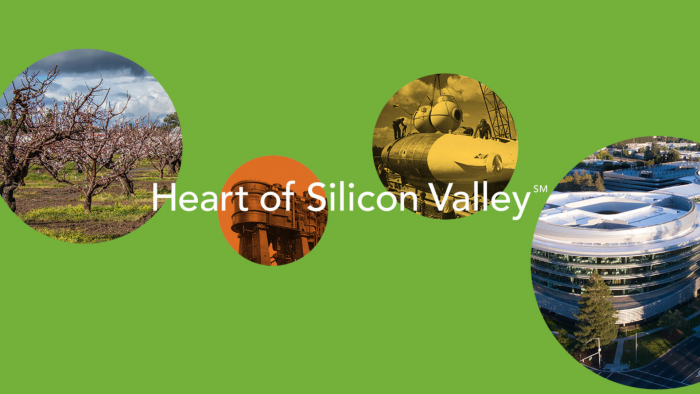Managing and Leading Staff Through A Pandemic

Life is made of so many partings welded together”
― Charles Dickens
It has been almost 4 months since the world got the idea of a major virus outbreak in Wuhan, China. For the purposes of travel insurance, 23 January 2020 is the date from which most travel insurance policies will not cover you because of the COVID-19 Pandemic. From that time on, the world has been trying to discern the best way forward, each Government trying to chart a course through unknown waters, looking for a safe harbor on the other side. Jurisdictions such as Australia and New Zealand have had restrictions in place since February and gradually those restrictions have grown tighter. New Zealand embarked on a national lockdown, Australia embarked on isolating people to their homes and banning gatherings from Church, sport, even eating and entertainment venues. Unless you have to be at work, you should be working from home. Of course in this narrative, both countries closed their international borders and Australian states closed their state borders. It certainly helped that both countries are island nations.
For an organization, however, closing your trading boundaries means you will be going out of business unless you have access to Government funds. Such a closure means a likely ‘lights out’ for the business, with only the slightest of chances that your business will be like the Phoenix, rising from the flames. In Australia and New Zealand, a ‘Job-Keeper’ payment was paid to businesses that met a set criteria. The money was to be used to pay their staff for the next 6 months. The logic, when we get through this COVID-19 Pandemic, we need to ensure that businesses that have been in hibernation can restart with their staffing available and ready to go. As both countries appear to have their respective COVID-19 curve well under control, there is every possibility that businesses will be trading again by June.
All of this begs the question. Is my job as a leader to support the staff as much as possible, inclusive of financial and emotional well-being support, whether they are working from home or waiting for work to recommence? Alternatively, is it just every person for themselves, trying to ride this vicious storm out? The answer is, do the first as far as possible and practicable. You will benefit as a leader in the long term. To do so properly means understanding the Anthropology of your organization and the Pandemic it is dealing with.
For the leadership group, they should be asking: What is the current state of play with our organization, its culture and employees during this pandemic and what responses are indicated as being needed? To answer such a question, It is worth painting the picture using two fictional mini-ethnographic case studies, loosely based on COVID-19 events reported in the media. The names of individuals and government agencies are generic and do not belong to any particular individual or reference any particular government department in any particular locality. They are offered here to give insight into a process that leaders could think about and the type of information that might be found when undertaking qualitative interviews and the range of questions and answers that might be gleaned. Any similarity to persons living or deceased is purely coincidental. A leadership group wanting to undertake such a process across their organization might give serious consideration to contracting the services of an Anthropologist to undertake the study.


You should be asking: What is the current state of play with our organization, its culture and employees during this pandemic and what responses are indicated as being needed?
Mini Ethnographic Hypothetical Case Study 1.
Jo (a fictitious name) is a 50-year-old employee of the State Department of Government (a fictitious name). As a Head Administrative Assistant, Jo works in the Finance Directorate and has some general responsibilities for managing the Department Budget and processing Accounts Payable.
When COVID-19 arrived, the Government issued a ‘Public Health Order’ for people to ‘shelter in place’, which included working from home if it were possible. In compliance with the Government ‘Public Health Order’, the Directors decided that Jo, along with most Administration Assistants, could do their work from home as most invoices and budget documents are received electronically. The expectation is that Jo could use an ‘All-in-One InkJet Printer – Scanner – Fax’ machine to process financial documents from home. They would check in via a ‘Video Conferencing’ platform, once per week for 30 minutes.
Jo lives alone in a small one-bedroom apartment in the ‘downtown’ area. With a weekly net salary of approximately $1261.50 and weekly rent of $670.00, Jo has a disposable income of $591.00 per week from which utilities and food are paid. Money is tight. Whilst Jo realizes that the need to work from home is important from a community health perspective, it is a financial nightmare. Working from home will increase the utilities bill, especially phone and electricity. Last Thursday, Jo received a phone call from the Head of the Department’s COVID-19 Contact Tracing Team. The conversation began welcoming Jo to the team. The administration skills and extensive experience of the Department meant that Jo was a perfect fit for this important team. The Directors had already approved the temporary transfer and it would help Jo’s income as it involved on-call work 24/7, which was effectively overtime pay. Jo had not been consulted and had to politely decline the offer. Jo’s parents are well into their 80s and are self-isolating to avoid the virus. Jo is their only child and is doing their shopping for them and checking on them by phone and when the groceries are delivered on the way home.
Mini Ethnographic Hypothetical Case Study 2.
Alex is a 30 something retail store manager for a well-known clothing brand. The store is located in a very busy shopping center and regularly met the company’s monthly targets. Alex had noticed that customers were not as frequent from the middle of February. By the middle of March, Alex was told by the Regional Manager to advise the casual staff the work ‘had dried up’ for them. Two weeks later, Alex was ‘stood down’, remaining on the payroll of the company but not being paid as the store had to close due to a ‘Public Health Order’ regarding COVID-19. The company ceased trading on the Stock Exchange the same day. Alex has had to relinquish the lease on a small apartment and has moved back to the parent’s home, who are grateful for the company. They know that they will have to support Alex unless Social Security can provide some assistance. That includes covering Alex’s bills and food. Both parents work as High School Teachers with more than 10 years’ experience and earn a gross salary of $80000.00 each, or $1234.00 each per week after tax. One of the salaries services a weekly mortgage repayment of $560.00 plus insurances and utilities. The other salary supports food and daily expenses. Spreading the remaining $1234.00 around 3 people instead of two will be challenging, especially with the two teachers having to also work from home. Money will be tight until Alex can go back to work or find another job. Alex has had regular weekly phone calls from the Regional Manager, who advised Alex that as a highly experienced manager there may be some hours of work for Alex in Head Office assisting with the company’s response to COVID-19.
What do these two case studies reveal?
In Anthropology, there are a variety of ways in which the Anthropologist could look at these two scenarios. At a ‘Macro Level’ there is universal consensus that COVID-19 is highly infectious. The virus has however produced division within society as to how it should be handled and how much personal liberty and legitimate freedom the people should cede to the Government on a ‘temporary basis’.
Applying the notion of the Social System articulated by Talcott Parsons (see Parsons. T. (1951) The Social System. London, Routledge and Kegan Paul) can also bring some insights to this discussion.
In the ‘Parsonian’ Social System, there are four key elements that comprise the ‘Institutional Orders’ within a Social Institution. These are Polity (as seen in politics, government, etc.), Economy (as seen in banks and business activity), Kinship (as seen in families and more broadly relationships) and Cultural and Community Organizations (as seen in the Media, Schools, Churches, organizations that integrate and safeguard our values and norms). Parsons maintains that these are underpinned by fundamental values that society as a whole has agreed to.
Whilst Parsons and his view of the Social System will always generate debate, it is useful in the analysis of organizations. Simply, the four key elements of Polity, Economy, Kinship and the ‘Cultural and Community Dimension’, offers staff of any organization, avenues of belonging or ways in which they can bond to the organization.
Taking our two hypothetical/fictitious case studies, Jo clearly has interactions with the polity, the governing leaders of the Department of Government that Jo works for. Jo draws a salary from them and thus engages with the ‘economy’ element of the organization. Indeed the daily work with budgets and invoices means that Jo has a significant amount of exposure to this element of the Department. Jo looks forward to traveling to and from work and meeting up with her friends at work, which is important given that Jo lives alone. In this regard, Jo is very reliant on the Department, for Kinship networks that offer support and friendship to Jo. As a long term employee of the Department, Jo participates in events, workshops, Department show cases, conferences and the like, that have as a core purpose the integration of the organization’s values and beliefs with the individual employee. This locates Jo in the sphere of the ‘Cultural and Community Dimension’. In other words, Jo’s life is significantly bonded to the Department of Government, the employer.
In a similar vein, Alex has interactions as a manager with senior managers and company directors, all representative of the polity of the company. Like Jo, Alex draws a salary from the economy of the company and manages the store’s budget and rosters. Alex has a significant circle of friends, mainly other managers from other stores within the company, giving access to the Kinship dimension of the company and like Jo, Alex as a manager attends company-sponsored events that integrate the company’s vision, mission, values and beliefs, all aspects of the ‘Cultural and Community Dimension’ of the company.
Both Alex and Jo have strong bonds with their respective employer. According to Merton’s Strain / Adaptation Theory (Models of Deviance), there are “five logically possible, alternative modes of adjustment or adaptation by individuals within the culture-bearing society or group” (Robert K. Merton (1938). Social Structure and Anomie. Source: American Sociological Review, Vol. 3, No. 5 (Oct., 1938), pp. 672-682 Published by: American Sociological Association See p. 676). These are: Conformity, Innovation, Ritualism, Retreatism and Rebellion. As Alex and Jo are forced to operate at ‘arms-length’ from their workplace, there is a real possibility that the video conferencing might become a mere ritual within their working week, rather than an avenue of sharing and collaboration. Indeed, there will likely be other rituals related to work that disappear.
There has to be a question mark over the purpose of a video conference in which the mics and in some cases the video are turned off by the host. This makes it less likely for collaboration to occur. A ritualized conformity could give way to retreatism or even rebellion via the employee who has logged into the video conference meeting but continues to do their own work on the computer terminal. They are in Merton’s model, a rebel, who in the isolation of their home could be a potentially sad or even dangerous one, as they silently ignore the directives and conversations in the meeting, labeling them as largely irrelevant to them at home. This could be magnified with the loss of opportunity to participate in team-building and team bonding events that integrate the vision, mission values, and beliefs of the organization with the individual. The loss of visible Kinship networks due to the isolation will likely compound the problem. The net effect is that the four avenues that bonded them to their organizations are now two. This raises the prospect that they are 50% connected to their organization. If this is true, if this is how they feel, then the Anthropology would suggest that they may only be 50% committed. The alternative is that they are 100% committed to the 50% they have access to! How would you know? A good leader would know!
In these case studies, it is reasonable to conclude that Alex’s manager knows Alex and Alex’s skillset. They regularly talk one to one with each other. Communication is key and the fact that Alex is being asked to consider a role on a company-wide COVID-19 Task Force shows the respect that Alex has within the company and with that trust. In Jo’s case, the Directors were happy for Jo to be transferred to a similar COVID-19 Task Force within the Department. However, the leadership group that thought this would be a good idea never thought to ring Jo to discuss it. If they had, they would have learned that Jo has elderly parents that are self-isolating, for whom Jo is acting as their carer. Jo’s parents could be regarded as vulnerable persons. The lack of communication in this scenario suggests that the leadership group may see Jo as a piece on a chessboard, a cog in the machinery of government. This suggests that Jo may not enjoy the respect in the workplace that Alex enjoys. It suggests a command and control culture exists within the Department and that communication is one-way, from the top down. This suggests an organizational culture that is unhealthy, possibly dysfunctional.
Taking a working definition of Culture, it is possible to glean a sense of what the leadership group of any organization needs to be doing during the pandemic.
“Culture represents the entire database of knowledge, values, and traditional ways of viewing the world, which have been transmitted from one generation ahead to the next—nongenetically, apart from DNA—through words, concepts, and symbols.”
Dr. David Givens ‘What is Anthropology?’
If the leadership of the organization have had a focus on creating a positive life-giving culture, then leading authentically through a pandemic will seem more manageable. The state of the organization’s cultural health is the key to effective crisis leadership in a pandemic and needs constant nurturing.
A leadership group should consider:
- What are the words being used in verbal and written communication and what are the words that should / could be used that would build people up, would strengthen and encourage them?
- Is there a consistent and coherent communication plan and strategy for the organization and does the leadership group have a shared understanding of it?
- How does the leadership group encourage staff, especially staff working off-site to have courageous conversations with them?
- How does the organization as a collective, share and promote the knowledge needed to keep the organization operational and embrace the values and the traditions of the organization, when everyone is working in a disparate and potentially ‘adhoc’ manner?
- How is trust maintained with staff working off-site, whilst keeping reasonable boundaries of accountability and professional respect?
- How open is the leadership group to staff experimenting with processes and procedures that might make things more effective in the virtual / off-site environment?
- What strategies are in play to engender hope and a spirit of optimism, given that the pandemic will end one day?
- What strategy is in play to garner the views of staff of what has worked well for the organization in the working from home / off-site scenario that the pandemic has given us?
- How does the organization celebrate its staff and their achievements, be it targets being met or compliments received or even significant birthdays being reached?
- What will the plan for a post-pandemic organization look like, how will it be communicated and how will it be celebrated with staff?
- How is the well-being of staff being catered for now and how will it be catered for in a second or third wave of the pandemic and what will well-being look like post-pandemic?
- How is the leadership group and the staff actively building a positive and healthy organizational culture that is founded on respect and trust, during the pandemic and beyond?
The COVID-19 pandemic has challenged every aspect of our lives and of our being. That said, countries like Australia and New Zealand have shown that with cooperation from the people, governments can flatten the curve and get on top of this virus. If anything, now is the time for courageous and authentic leadership! Now is the time for hope and great expectations! Now is the time for a leadership that is infectious in its desire to improve and build a healthy and positive organizational culture for all! Now is the time to shape not just the present but the future as well! It is a challenge that can be met and achieved.
“The struggle of today, is not altogether for today — it is for a vast future also. With a reliance on Providence, all the more firm and earnest, let us proceed in the great task which events have devolved upon us.”
— Abraham Lincoln First State of the Union Address (1861)
Abraham Lincoln, First Annual Message Online by Gerhard Peters and John T. Woolley, The American Presidency Project
David Ivers is a Fellow of the Royal Anthropological Institute (Great Britain and Ireland)

CAREER ADVICE

GOV TALK




